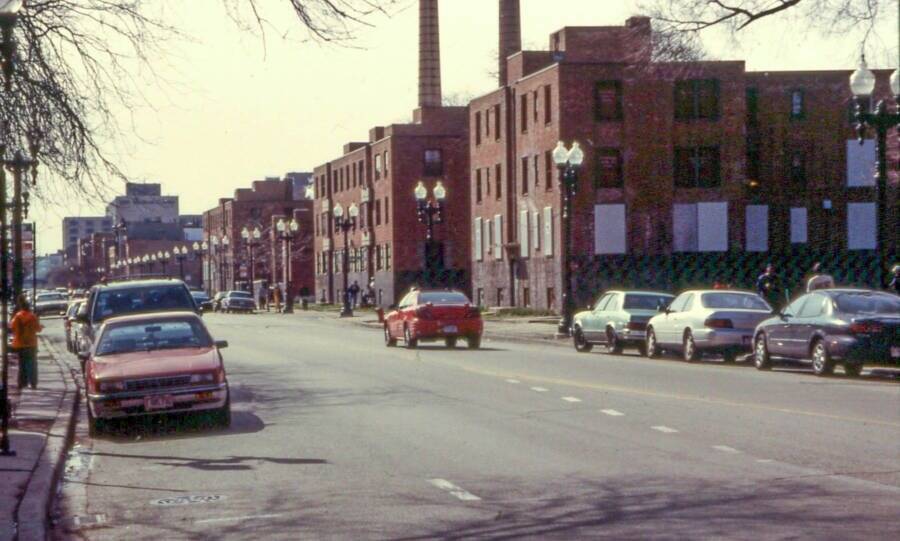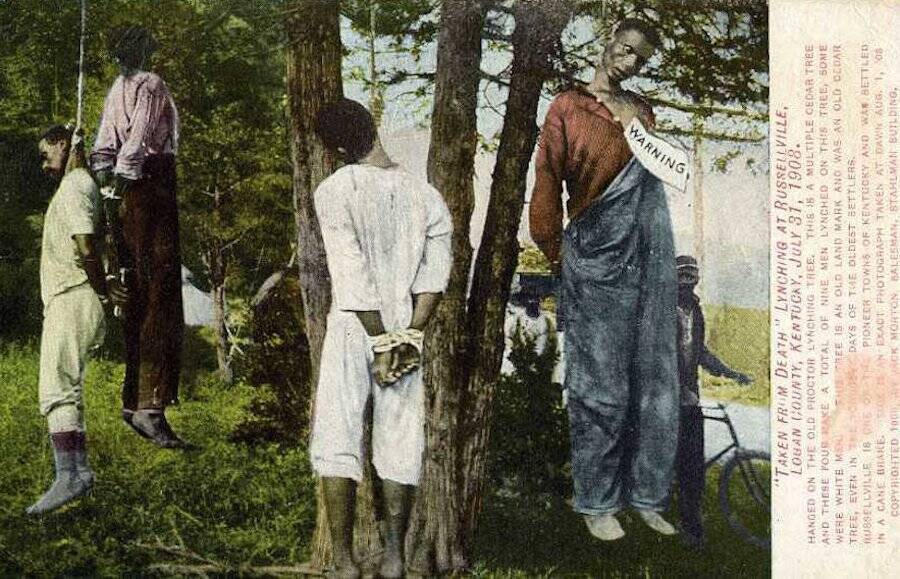The Scary Urban Legend Of Candyman Has Horrifying Roots In History
Though the urban legend of Candyman largely begins and ends with the eponymous 1992 horror film, it has a terrifying basis in history. The urban legend that the film is based on is said to be inspired by Chicago’s inner-city violence, segregation laws, American slavery and systemic racism.
The film is also based on Clive Barker’s 1981 short story The Forbidden, in which Candyman was originally depicted as a white man dressed in a patchwork outfit. Set in the slums of Liverpool, England, the story centers on a young woman studying graffiti who finds herself hunted by a deadly figure.
The same year that Barker’s story was published, the Cabrini-Green housing projects in Chicago recorded 11 murders and 37 murders by gunfire — all in the span of three months. The combination of Barker’s short story and America’s bloody, racist climate all worked to inspire the scary urban legend behind the 1992 film of the same name.

David WilsonThe ABLA homes in Chicago’s South Side where Ruthie May McCoy, whose story would inspire the scary urban legend of Candyman, was murdered.
In the film, there is an urban myth that revolved around a former slave named Daniel Robitaille. A successful shoe manufacturer, Robitaille eventually became a respectable painter and was commissioned to paint a portrait of a white woman named Caroline Sullivan. The pair fell in love and Sullivan became pregnant out of wedlock.
An enraged white mob subsequently hacked Robitaille’s right hand off, smeared it in honey, and let a swarm of killer bees sting him to death. But Robitaille returned as an angry ghost and vowed to kill anyone who uttered the name “Candyman” five times into a mirror. He’d appear behind them and kill them with one stroke of a hook fixed to his hand.
The film took cues from Chicago’s violent realities throughout the 1980s and was shot in Chicago at the Cabrini-Green projects, specifically. In fact, one particularly chilling murder at the Cabrini-Green project inspired Candyman, the movie.

Wikimedia CommonsVictims of a 1908 lynching in Kentucky. The urban myth of Candyman was inspired just as much by the injustices of racism as it was by Clive Barker’s original short story.
On April 22, 1987, a mentally ill Chicagoan named Ruthie Mae McCoy dialed 911 begging for help, claiming that somebody was trying to invade her home through the bathroom mirror. Despite neighbors reporting gunshots thereafter, it took police two days to report to the scene, where they found McCoy shot to death and a hole in her bathroom wall.
The urban myth of Candyman is a disturbing example of how the horrors of reality can inspire fables.





